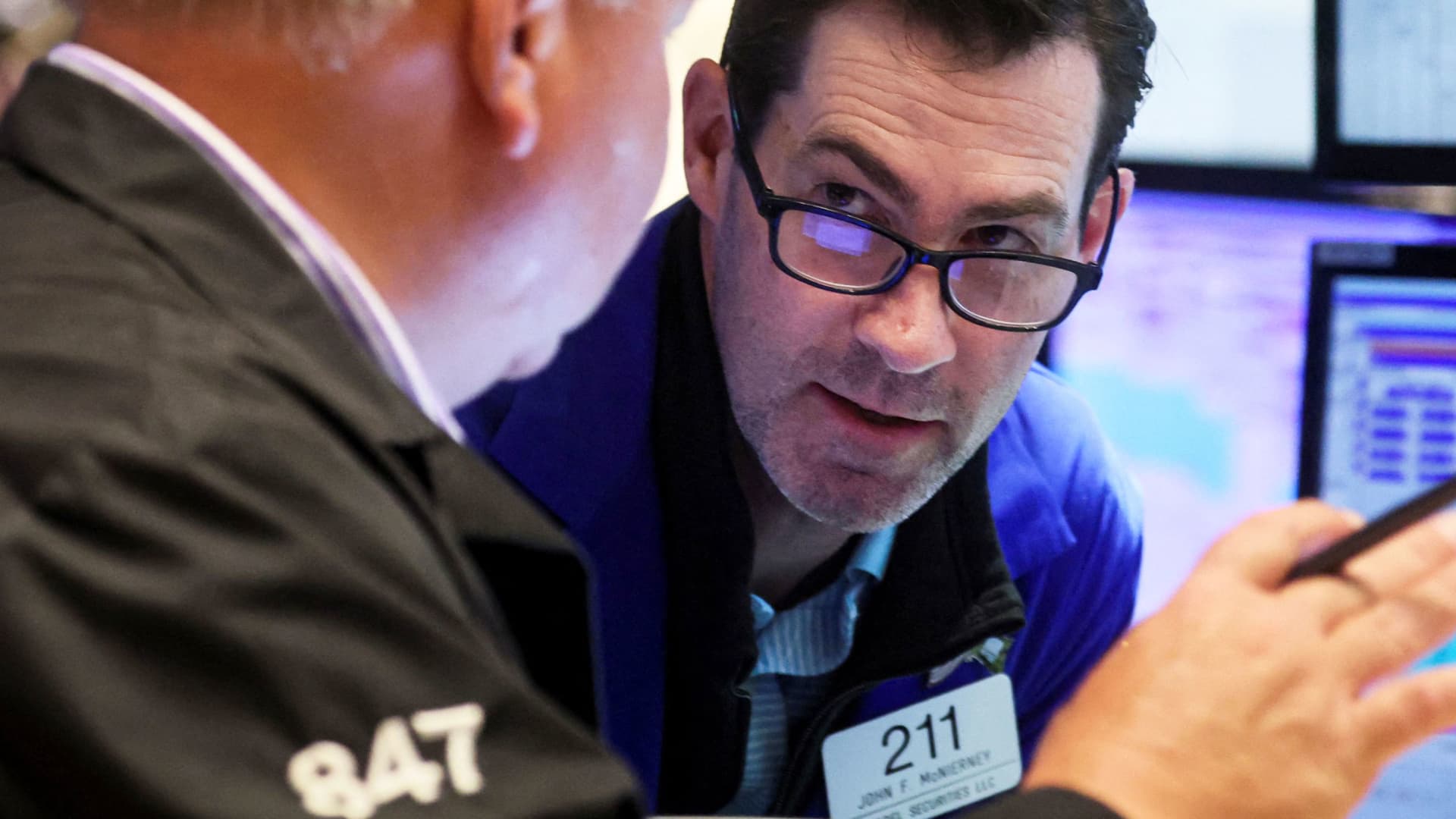
Traders work on the floor of the New York Stock Exchange (NYSE) in New York City, June 3, 2022.
Brendan McDermid | Reuters
U.S. stock futures fell Sunday night as Wall Street tries to recover from one of its worst weeks of 2022.
Futures tied to the Dow Jones Industrial Average dropped 115 points, or 0.4%, while S&P 500 futures slid 0.7%. Nasdaq 100 futures pulled back by 1%.
The major averages last week posted their biggest weekly declines since late January. The Dow and S&P 500 fell 4.6% and 5.1%, respectively, while the Nasdaq Composite lost 5.6%.
A chunk of those losses came Friday, when hotter-than-expected U.S. inflation data spooked investors. The Dow dropped 880 points, or 2.7%. The S&P 500 and Nasdaq lost 2.9% and 3.5%, respectively.
The Bureau of Labor Statistics reported Friday that the U.S. consumer price index rose last month by 8.6% from a year ago, its fastest increase since December 1981. That gain topped economists’ expectations. The so-called core CPI, which strips out food and energy prices, also came in above estimates at 6%.
On top of that, the preliminary June reading for the University of Michigan’s consumer sentiment index registered at a record low of 50.2.
That data comes ahead of a highly anticipated Federal Reserve meeting this week, with the central bank expected to announce at least a half-point rate hike on Wednesday. The Fed has already raised rates twice this year, including a 50-basis-point (0.5 percentage point) increase in May in an effort to stave off the recent inflation surge.
“May’s CPI report showed scant signs of inflation peaking, though we still expect peaking soon. The report also suggests a more hawkish Fed and higher recession risk,” wrote Ed Yardeni, president of Yardeni Research.
“Investor and consumer sentiment both have soured. But this time, pervasive bearishness may not be as useful a contrarian bullish signal as in the past,” he said, adding that the firm now sees a 45% chance of a “mild recession;” that’s up from the previous forecast of 40%.
Stocks have had a tough year as recession fears rise along with consumer prices. The S&P 500 is down 18.2% year to date through Friday’s close. It’s also 19.1% below an intraday record set in January. The Dow has fallen 13.6% in 2022, and the Nasdaq Composite is deep in bear market territory, down 27.5% this year and trading 30% below an all-time high set in November.
Subscribe to CNBC PRO for exclusive insights and analysis, and live business day programming from around the world.






